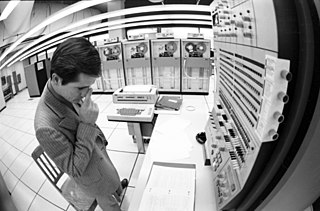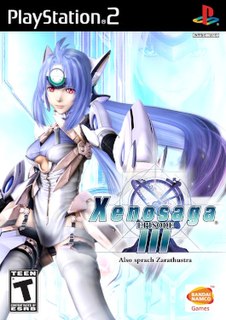Related Research Articles

Foonly Inc. was an American computer company formed by Dave Poole in 1976, that produced a series of DEC PDP-10 compatible mainframe computers, named Foonly F1 to Foonly F5.

In computer science, a microkernel is the near-minimum amount of software that can provide the mechanisms needed to implement an operating system (OS). These mechanisms include low-level address space management, thread management, and inter-process communication (IPC).

In computing, time-sharing is the sharing of a computing resource among many users at the same time by means of multiprogramming and multi-tasking.
pSOS is a real-time operating system (RTOS), created in about 1982 by Alfred Chao, and developed and marketed for the first part of its life by his company Software Components Group (SCG). In the 1980s, pSOS rapidly became the RTOS of choice for all embedded systems based on the Motorola 68000 series family architecture, because it was written in 68000 assembly language and was highly optimised from the start. It was also modularised, with early support for OS-aware debugging, plug-in device drivers, Internet protocol suite (TCP/IP) stacks, language libraries, and disk subsystems. Later came source code level debugging, multiprocessing support, and further computer networking extensions.

The Conversational Monitor System is a simple interactive single-user operating system. CMS was originally developed as part of IBM's CP/CMS operating system, which went into production use in 1967. CMS is part of IBM's VM family, which runs on IBM mainframe computers. VM was first announced in 1972, and is still in use today as z/VM.
Extremely Reliable Operating System (EROS) is an operating system developed starting in 1991 at the University of Pennsylvania, and then Johns Hopkins University, and The EROS Group, LLC. Features include automatic data and process persistence, some preliminary real-time support, and capability-based security. EROS is purely a research operating system, and was never deployed in real world use. As of 2005, development stopped in favor of two successor systems, CapROS and Coyotos.
Tymnet was an international data communications network headquartered in Cupertino, California that used virtual call packet switched technology and X.25, SNA/SDLC, BSC and Async interfaces to connect host computers (servers) at thousands of large companies, educational institutions, and government agencies. Users typically connected via dial-up connections or dedicated asynchronous connections. The business consisted of a large public network that supported dial-up users and a private network business that allowed government agencies and large companies to build their own dedicated networks. The private networks were often connected via gateways to the public network to reach locations not on the private network. Tymnet was also connected to dozens of other public networks in the United States and internationally via X.25/X.75 gateways.
Capability-based security is a concept in the design of secure computing systems, one of the existing security models. A capability is a communicable, unforgeable token of authority. It refers to a value that references an object along with an associated set of access rights. A user program on a capability-based operating system must use a capability to access an object. Capability-based security refers to the principle of designing user programs such that they directly share capabilities with each other according to the principle of least privilege, and to the operating system infrastructure necessary to make such transactions efficient and secure. Capability-based security is to be contrasted with an approach that uses traditional UNIX permissions and Access Control Lists.
Adeos is a nanokernel hardware abstraction layer (HAL), or hypervisor, that operates between computer hardware and the operating system (OS) that runs on it. It is distinct from other nanokernels in that it is not only a low level layer for an outer kernel. Instead, it is intended to run several kernels together, which makes it similar to full virtualization technologies. It is free and open-source software released under a GNU General Public License (GPL).
Tymshare, Inc. was a time-sharing service and third-party hardware maintenance company competing with companies such as CompuServe, Service Bureau Corporation and National CSS. Tymshare developed or acquired innovative technologies, including data networking (Tymnet), electronic data interchange (EDI), credit card and payment processing, telecommunications provisioning (COEES), office automation and database technology. It was headquartered in Cupertino, California from 1964 to 1984.
The SDS 940 was Scientific Data Systems' (SDS) first machine designed to directly support time-sharing. The 940 was based on the SDS 930's 24-bit CPU, with additional circuitry to provide protected memory and virtual memory.

Xenosaga Episode I: Der Wille zur Macht is a role-playing video game developed by Monolith Soft and published by Namco for the PlayStation 2; the game was released in 2002 in Japan and 2003 in North America. It is the first entry in the Xenosaga trilogy, and forms part of the wider Xeno metaseries. Gameplay features exploration of environments through a linear narrative, while battles use turn-based combat with the player characters fighting both on foot and piloting large mecha dubbed A.G.W.S.; combat in turn features a system of button combinations for attack types, and multiple leveling systems.

Xenosaga Episode III: Also Sprach Zarathustra is a role-playing video game developed by Monolith Soft and published by Namco Bandai Games for the PlayStation 2 in 2006. It is the final entry in both the Xenosaga trilogy and the larger Xenosaga series, which forms part of the Xeno franchise. Concluding the narrative of Xenosaga Episode I and Episode II, Episode III sees Shion Uzuki and the battle android KOS-MOS search out the origins of the hostile alien Gnosis while being hunted by Shion's former employers and four powerful humans called the Testaments. Gameplay is carried over from the first two games, featuring exploration of environments through a linear narrative, while battles follow a turn-based system featuring multiple leveling systems and combat with both a human party and mecha.
A hybrid kernel is an operating system kernel architecture that attempts to combine aspects and benefits of microkernel and monolithic kernel architectures used in computer operating systems.

Capability-based Reliable Operating System (CapROS) is an operating system incorporating pure capability-based security. It features automatic persistence of data and processes, even across system reboots. Capability systems naturally support the principle of least authority, which improves security and fault tolerance. It is free and open-source software released under the GNU General Public License version 2 (GPLv2), and GNU Lesser General Public License version 2 (LGPLv2).
Capability-based operating system generally refers to an operating system that uses capability-based security.
The Mac OS nanokernel is an operating system kernel serving as the basis of most PowerPC based system software versions 7 through 9 of the classic Mac OS, predating Mac OS X.
Great New Operating System In the Sky (GNOSIS) is a capability-based operating system that was researched during the 1970s at Tymshare, Inc. It was based on the research of Norman Hardy, Dale E. Jordan, Bill Frantz, Charlie Landau, Jay Jonekait, et al. It provided a foundation for the development of future operating systems such as KeyKOS, EROS, CapROS, and Coyotos. In 1984, McDonnell Douglas acquired Tymshare, and a year later sold GNOSIS to Key Logic, where GNOSIS was renamed KeyKOS.
Ann Hardy is an American computer programmer and entrepreneur, best known for her pioneering work on computer time-sharing systems while working at Tymshare from 1966 onwards.
References
- ↑ The KeyKOS Nanokernel Architecture Archived 2011-06-21 at the Wayback Machine
- ↑ "Roots of KeyKOS". Cap-lore.com.